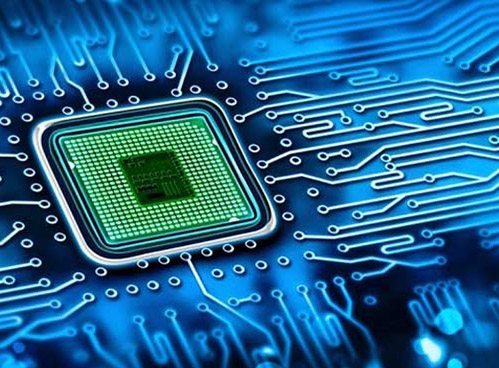The future of artificial intelligence is here. From smart home thermostats that adjust themselves according to historical weather trends and future predictions to smartphone apps that provide relevant shopping recommendations based on your purchase history, many of us use next-gen AI without even realizing it.
But if companies like Microsoft and Facebook have their way, it will soon be impossible to miss the prevalence of AI in our everyday lives.
Changes to Existing Technologies
While the creation of AI chips is certainly going to require new technologies and hardware to be developed, there are also many existing technologies that will need to be adapted to allow for the influx of information and data that AI chips are likely to produce.
For example, the circuit boards found in nearly every electrical gadget you own:
“Data traveling on a printed circuit board is like cars on a road,” says Dan Thau of Millennium Circuits Limited. “Too much data traveling will cause traffic jams and the signal will be delayed.”
“There are specific materials that have low loss, high speed capabilities,” he explains, “but material suppliers will have to continue to push the envelope and develop new materials to accommodate for higher data speeds.”
Essentially, circuit boards (and other common electrical components in our gadgets) will have to evolve to accommodate the data-heavy, artificially intelligent electronics tech companies are soon to be developing.
“PCB manufactures will have to be able to get tighter on all trace/spacing requirements and develop creative ways to pack more signal traces on a single PCB, while also keeping the size of the PCB as compact as possible,” says Thau. “Using the correct material and involving these manufacturing techniques would allow more data points on the PCB and allow the data to travel at the high speeds necessary.”
Microsoft Is Paving the Way
It should come as no surprise that Microsoft is one of the frontrunners in today’s AI sector. They’re currently working on several different chips and platforms to complement their current hardware options.
Microsoft is already designing an AI chip specifically for the second generation of their HoloLens device. A breakthrough gadget in the area of augmented reality, the marriage between the HoloLens and next-gen AI has the potential to push the technology even further and, ideally, into the mainstream.
In a recent interview with CNBC, Panos Panay, corporate vice president of devices with Microsoft, indicated plans for further AI expansion and development across other product lines and hardware families. Possible candidates include the Microsoft Xbox One gaming console, their popular Surface tablets and any of their other laptops or desktops.
Facebook and Intel Enter the Picture
But there are other players in the AI game, too. Facebook and Intel recently joined forces to pioneer their brand of AI technology – and they’re ready to ship the first batch of their new AI-driven chips by the end of 2017.
Dubbed the Intel Nervana Neural Network Processor, the chip draws inspiration and technologies from various sources – including the 2016 acquisition of Nervana Systems. Industry experts are optimistic about breakthroughs like this, as it could make it easier for enterprises to embrace big data and adopt standards for processing and managing massive amounts of information.
Walmart, for example, currently relies on Nvidia chips to provide the processing power needed to run deep learning algorithms and advanced data analyses. Nvidia – which focuses on graphical processing units, or GPUs, for high-end video gaming – isn’t exactly the best choice to power mission-critical infrastructure and systems that utilize next-gen AI.
Unfortunately, the market is extremely limited at the moment. Instead of building a system designed explicitly for Artificial intelligence and big data processing, organizations have no choice but to use temporary measures and ad-hoc solutions. Although it works, these workarounds are anything but ideal.
Intel’s new chip won’t even hit the market until 2018. The company will distribute the initial production run to their closest partners – including Facebook – for early testing and implementation. Intel will likely release performance benchmark before the end of 2017, so IT managers will at least be able to see the efficiency of the new chip before committing to a purchase on behalf of their organizations.
Smaller Companies Are Making Moves, Too
Based out of China, a new startup known as Unicorn is making headlines throughout the region after raising $100 million from early investors. With the country’s AI semiconductor market currently worth more than $1 billion, it’s a relatively safe investment.
Unicorn’s new chip offers many enhancements and improvements over traditional options. Not only do their chips have a higher integration density than their competitors’, which works well in mobile devices like smartphones and laptops, but Unicorn specializes in building chips for specific systems and applications.
Taking this approach – as opposed to relying on generic, all-purpose chips – might be the key to unlocking the true potential of AI in the coming weeks, months and years.
Building the Future – One Smart AI Chip at a Time
From driving production of printed circuit boards (PCBs) to playing an integral role in augmented reality, next-gen AI has the potential to revolutionize life as we know it.
Although the technologies involved are still highly complex, even for the experts, breakthroughs from the likes of Microsoft, Intel, Facebook and Unicorn are just the start of more big things yet to come.
























